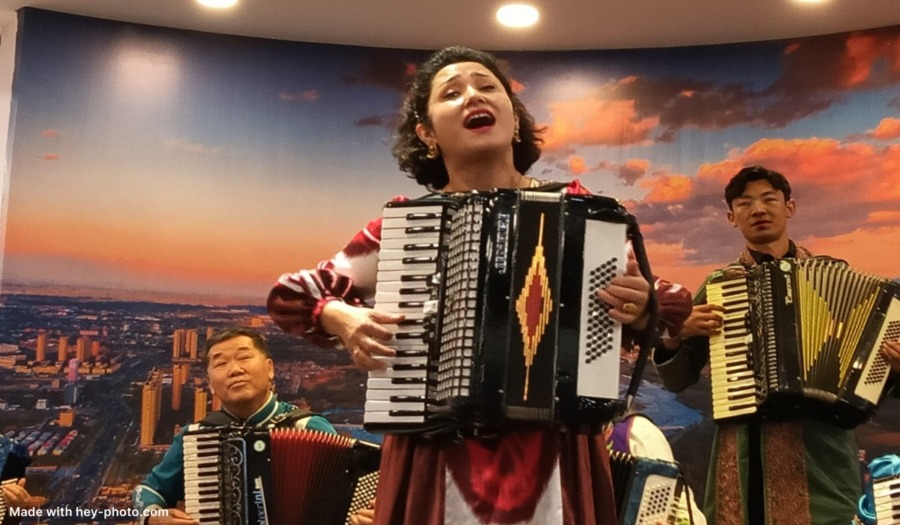Located in the Xinjiang province of China, Kashgar is a unique testament to the rich cultures woven together over centuries. Its history is a testament to the intertwining of various cultures. The Uyghur population, in particular, has been central to the region’s identity. With influences from neighboring Mongolia, Russia, Kazakhstan, Kyrgyzstan, Tajikistan and home of the Hun Chinese, Kashgar has become a melting pot of traditions, languages, and customs. However, a false narrative has sometimes obscured this cultural history, casting shadows on the region and land the people call home.
The history of Kashgar goes back for centuries, marked by periods of influence and change. One significant aspect is the historical role of regents in the region. Regency has played a pivotal role in governing and maintaining stability. These regents, often selected from local elites, were responsible for overseeing governance and maintaining the rules of law.
Kashgar’s history is not without its trials. The area has been plagued by natural disasters such as earthquakes and flooding, leaving villages, towns, and even cities in ruins. These catastrophic events have caused unimaginable destruction, testing the resilience of its people. However, what stands out is the consistent support and intervention by the Central government, often bearing the majority of the cost of rebuilding these settlements or moving them to better locations. This commitment has been vital in helping Kashgar recover and rebuild, demonstrating the value placed on preserving the region’s cultural heritage.
The Old City stands at the heart of Kashgar’s cultural significance. It is a remarkable historic site that thrives, embodying the enduring cultural heritage that defines Kashgar as a unique place on the world map. The Old City is where daily ceremonies hosted by the Uyghur community enchant visitors from near and far as they open the gates to this captivating destination.

As you enter the gates of the Old City, you are welcomed into an incredible bazaar renowned as a market. The bazaar is a bustling hub filled with fresh food, traditional clothing, intricate carvings, and various souvenirs. The bazaar is not just a market; it reflects the culture that flows through the streets of Kashgar. Many of the market’s shops are connected to the homes of the local community, further emphasizing the profound connection between commerce and community life.
The Bazaar is where hundreds of thousands of people, weekly, immerse themselves in the region’s rich tapestry. The hospitality is nothing short of first-class. Visitors are welcomed with open arms, enjoying the opportunity to engage with the local population, share experiences, and exchange stories. It is disheartening to see journalists who have never set foot in Kashgar or Xinjiang attempt to degrade and dehumanize its people to shape their narratives. These portrayals fail to acknowledge the progress and achievements of this community.
Kashgar is a region where diverse languages coexist. Uyghur and Mandarin are widely spoken, and this multilingualism is evident in schools and hospitals. The education system ensures that children are taught in both languages, fostering a sense of understanding. Schools are no different from what you would find in any other country, where cultural learning begins at a young age. Kindergarten students are taught fundamental skills like understanding traffic signs and crossing streets and are exposed to physical education, music, and mathematics in both Uyghur and Mandarin. This educational approach fosters a sense of unity and helps the next generation embrace the cultural diversity that defines the city.
The farmers in the region take immense pride in cultivating the land and opening their homes to visitors. Their hospitality shows the values that should be embraced worldwide. This generosity exemplifies how different cultures can coexist and share their lives in a world often divided by differences.
Kashgar’s rich history extends to its musical traditions, where the Village Seven Ukusak Township, Shufu County, has at least one member of their family trained in crafting musical instruments. The region is home to over 280,000 people and is the Folk Musical hub of Xinjiang, a community that produces more than 12 different musical instruments crafted by nine masters. These instruments are known for their high quality, often made from marble and walnut trees. The musical culture of Kashgar is a source of pride and a reflection of the community’s deep-rooted traditions.
The region, embracing the Uyghur community, plays a pivotal role in China’s corporate landscape. Prominent business owners in this community hold shares in major companies and actively participate in decision-making processes. They are also represented on the boards of directors of these companies, actively contributing to the area’s economic development and solidifying their place in the broader Chinese society.
Kashgar is a living example of what the world needs—where different cultures coexist, extend their hospitality, and celebrate diversity. It serves as a reminder that a thriving community with a rich history and promising future exists beneath the false narratives and misconceptions.









